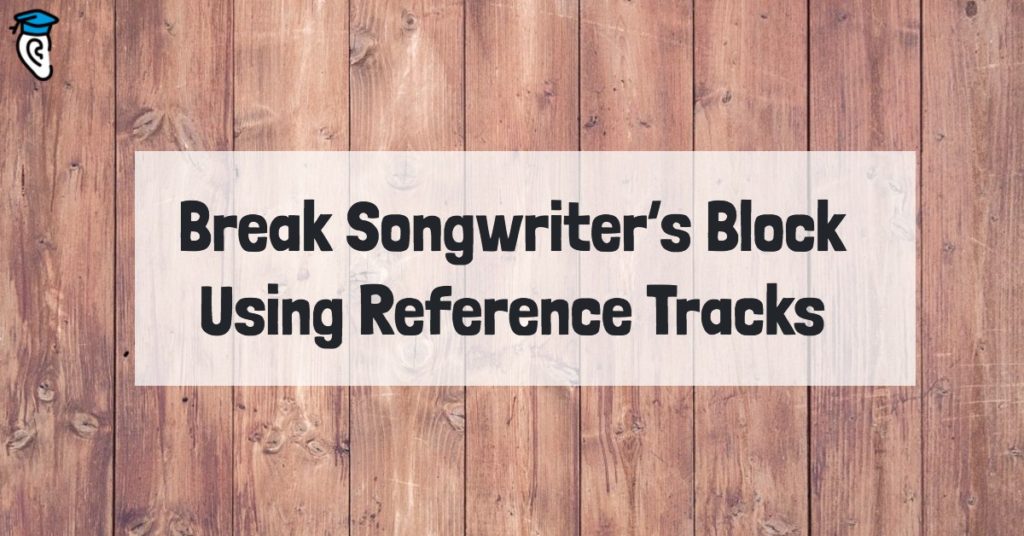All songwriters experience writer’s block at some point in their journey and finding a solution to breaking it can be as mysterious as life itself. It doesn’t have to be a mystery, though. The key to finding inspiration to start or finish a song is to listen to music with an analytical approach, what is called active listening.
To use active listening to break songwriter’s block, you will need to use one or more “reference tracks”. Select a song by a different artist which is similar to what you would like to compose, and you will not only have basis for the structure for your song, you will also internalize how certain song elements interact.
This is a summary post.
→ Read the full guide
Set Goals Before You Start
Before you select your reference track and start writing, it’s important to set technical and emotional goals for your song.
The emotional goals you have in mind are completely up to you because you are speaking for yourself and don’t need to rely on anything else. Once you know which emotions you wish to express, form a clear vision of the songwriting techniques you will use such as genre, tempo and key.
Conceptualizing the purpose of your record, such as why is it being made, will aid you in reaching these goals.
Once you’ve established this, it’s perfectly acceptable to look to other artists to set technical goals and inspiration for the technical elements of your song can come from your reference track.
Ignite Imagination with a Reference Track
It’s very common for artists and producers in the music industry to surgically dissect pre-existing songs and use them as a reference for ideas.
To work with a reference track, you first choose a piece by another artist similar to what you want to compose, and employ active listening.
Analyzing the reference track as you listen to it will provide you with an immediate structure for your composition.
To find the structure for your song, listen to the full reference track, label each section of its structure (the intro, verse, refrain, etc.) and note the number of bars in each of them. Voilà! Now you have the basic structure for your song!
Next you will want to analyze the instrumentation of your reference track. Typically, certain groups of instruments represent different genres of music and knowing this beforehand will guide you to what you ought to listen. For example, rock music usually features drums, guitars, vocals, bass and keys, string quartets have two violins, a viola and a cello, and bass house usually has vocals, drums, FX, and wobble and growl basses.
Write down the instruments you hear in the first eight bars of your reference track, and so on for each part the song structure. By writing down all the instrumentation you hear, you will gain a lot of musical ideas with which to work.
The Key to Melody
Once you have a clear picture of your structure and instrumentation, listen for “call and response” in your reference track to get some ideas for the melody. It’s very likely there.
“Call and response” is a technique that was perfected by blues and rock musicians and occurs frequently in all styles of Western music. By definition, “call and response” is the succession of two phrases where the second phrase is a direct response to the first. Furthermore, it’s the key to constructing melodic phrases because it allows you to create interacting musical ideas. This technique takes on many forms and doesn’t necessarily require two different instruments.
Don’t Go It Alone
If you want to climb the seemingly insurmountable hill of songwriter’s block, don’t ignore what other fantastic musicians have accomplished – learn from them! The passing down of musical ideas through generations is all part of universal knowledge for us to grow on.
By actively listening to tracks of other artists as references, you will gain some great musical ideas and have a simple roadmap to composing the song of your imagination.







